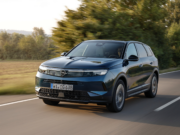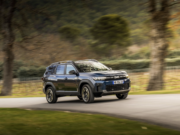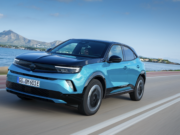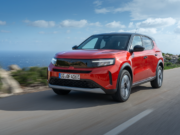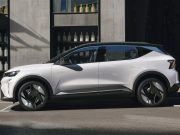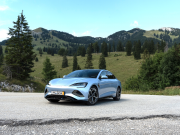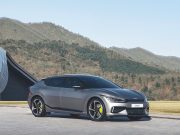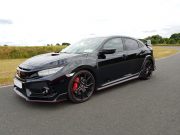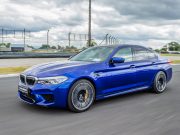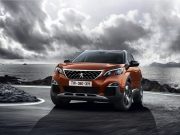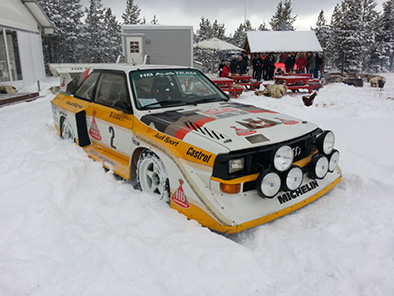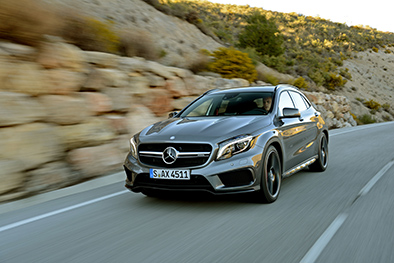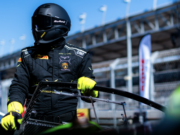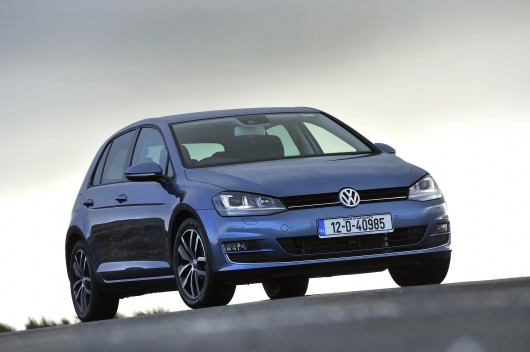
It’s probably fair to say that the design team in Volkswagen responsible for the Golf have a relatively handy job when it comes to designing a new version of the successful hatch back. Since the Mark 1 Golf the basic shape has changed little over the years, a Volkswagen Golf is instantly recognisable thanks to its shape, in a similar vein to the Porsche 911.
This new seventh-generation Golf has been put on a diet, it’s up to 150 kilograms lighter than its predecessor. It’s also larger, 56mm longer and 13mm wider, and sits lower (28mm) as a result of its new underpinnings. This new Golf has been built on Volkswagen’s new Modular Transverse Matrix (MQB), it will be utilised in many forthcoming new models from the Volkswagen group, including the new Audi A3 and Seat Leon. The petrol engine line-up for the new improved Golf includes a 1.2-litre TSI unit with 85hp and 105hp variants, a new 1.4-litre TSI engine with 140hp, complete with active cylinder technology. The diesels consist of a 1.6-litre TDI with 105hp and a new 2.0-litre TDI with 150hp, there’ll soon be a 90hp diesel model on sale in Ireland also.

Sit inside the Golf and it’s clear to see why it’s been at the pinnacle of the hatch back market, the quality of the fit and finish of materials used throughout is exemplarily. Granted, our test car was lavishly treated to many extras in addition to the already high level specification of this Highline model, nonetheless the basic architecture is carried over throughout the range. Whether you drive a short run to the shops or cross the country the Golf will comfort you and your passengers with ease.
Our test car was equipped with a 2.0-litre TDI diesel engine, it produces 150hp and a 320Nm of torque. Mated to the optional seven- speed DSG transmission, resulting in a refined relaxed drive. There’s more than enough power in reserve throughout the rev range for rapid progress should the need arise. The twin-clutch transmission provides instantaneous gear changes, you can opt to change gears yourself with either the gear lever or the paddles neatly tucked behind the steering wheel, for more driver involvement. The chassis on this new Golf is notably more responsive then its predecessor, it’s willing to react to steering inputs precisely and provide some thrills on open twisty roads. Previously one of its main competitors, the Ford Focus outshone in this regard, the gap has now been firmly closed.
Volkswagen offers the new Golf across three trim specifications, Trendline, Comfortline and Highline. All models benefit from seven airbags, ABS with ESP, XDS electronic differential lock and Isofix preparation for two rear child seats fitted as standard. The entry-level Trendline model comes complete with a five-inch colour touchscreen infotainment system and Climatic semi-automatic air conditioning. The progression to Comfortline rewards with a multitude of additional equipment, this includes cruise control, Bluetooth connectivity, a 5.8” colour screen, USB & aux-in interfaces and 15” alloys. The Highline variant sits on 16” ‘Dover’ alloy wheels and comes equipped with front fog lights, a black radiator grille with chrome mouldings, electrically folding mirrors, a three-spoke leather multifunction steering wheel, sports front seats and piano black inserts in the centre console.
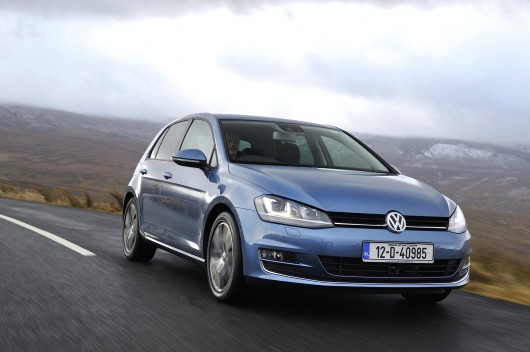
Naturally there is a host of optional equipment available to tailor your Golf to your individual requirements, some of these options include Park Assist whereby the car will park itself into a parking space, taking the hassle out of parallel parking. There’s also adaptive cruise control and a rear-view camera available.
Volkswagen hasn’t done anything radical with this new seventh-generation Golf, they didn’t need to, they’ve tweaked what was already a class-leading car in terms of quality. This latest Golf has all the charm required to make ownership a pleasurable experience.
[table “105” not found /]



